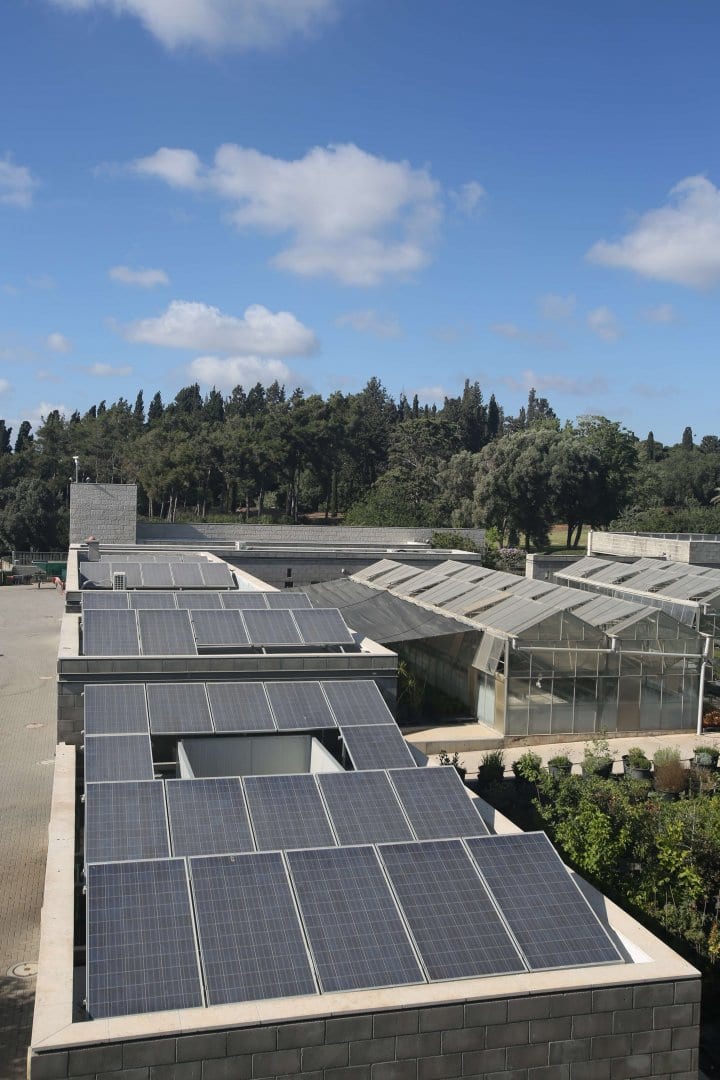Electricity consumption at Ramat Hanadiv in 2016 stood at 430,000 kWh. In comparison with the average of the previous three years our electricity consumption has decreased by about 50%. This is an achievement that stems partly from the saving and efficiency actions described below.
Lighting
We illuminate the Visitors Pavilion with daylight thanks to the unique design of the building’s roof. The light penetrates the glass installed in the gap between the roof slopes, along the length of the Visitors Pavilion. According to the same principle of using natural light we installed a skylight in the recently renovated offices. In the other offices and the mausoleum we installed energy-saving led lighting. In addition, we installed solar fans in the storerooms and solar torches for outside light at night. The torches were installed in the area around the Visitors Pavilion, in the playground, in the footprint garden, in the picnic area, in the parking areas and around the operations area of Ramat Hanadiv.
Solar panels
Solar panels for electricity production were installed on some of the roofs. According to the existing arrangement in Israel, the electricity produced by these panels is transferred to the Electricity Company that reimburses us accordingly. We produce about 14,000 kWh annually with these panels.
Air conditioning
To save energy we chose to install an innovative geothermal system in the Visitors Pavilion for cooling the air inside the building. This system is based on the fact that the temperature of the soil at a depth of 2 m or more remains constant and stands at 21.7 degrees Celsius; thus the warm water flowing to the soil’s depths cools down by about five degrees while the cold water flowing to the soil’s depths warms up. This sophisticated system includes two separate, closed water systems that meet in a unit called the chiller (heat exchange).


